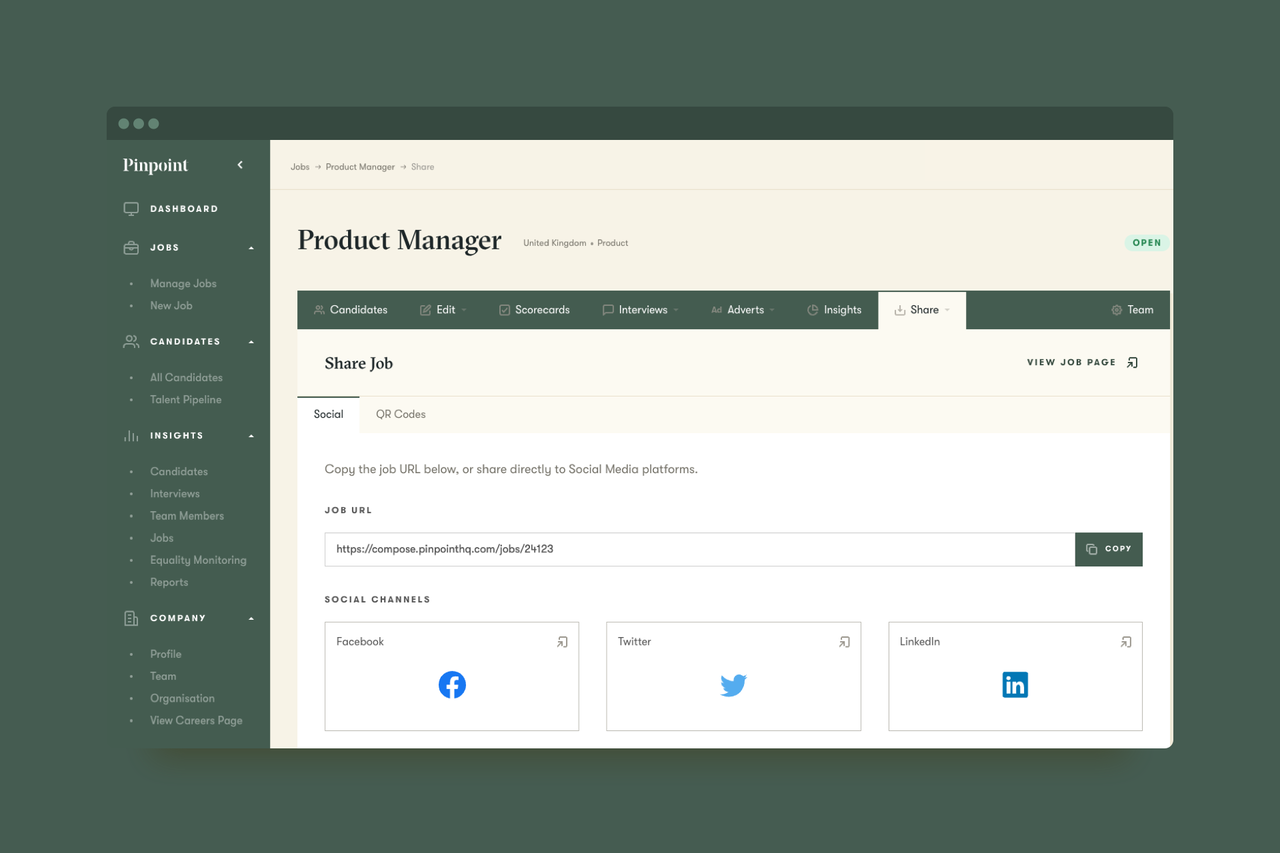In today’s competitive job market, keeping track of your job applications can make all the difference. LinkedIn is a powerful tool for job seekers, allowing you to connect with recruiters and showcase your skills. However, without an organized approach, it’s easy to lose sight of your applications. In this post, we’ll explore why tracking your job applications is crucial and how to effectively manage your progress on LinkedIn.
Why Tracking Job Applications is Important

Tracking your job applications is more than just a way to stay organized; it’s a strategy that can enhance your job search experience. Here are several reasons why maintaining a detailed log of your applications can lead to better outcomes:
- Stay Organized: With so many applications sent out, it's easy to forget details like which positions you applied for or when. A tracking system can help you manage this information efficiently.
- Follow Up Effectively: When you know the status of your applications, you can follow up with recruiters or hiring managers at appropriate times. This demonstrates your enthusiasm and professionalism.
- Analyze Your Progress: Keeping track allows you to see patterns in your job search, such as which industries respond best or which types of roles you’re most successful in. This insight can guide your future applications.
- Motivation Boost: Seeing how many applications you've sent out can motivate you to keep going, especially during tough times when responses may be slow.
- Prepare for Interviews: If you’re called for an interview, having a record of your application can help you recall what you wrote or discussed, making you feel more prepared.
To effectively track your job applications on LinkedIn, consider using a simple spreadsheet or a project management tool. Here’s a quick layout you might find helpful:
| Company Name | Position | Date Applied | Status | Follow-Up Date | Notes |
|---|---|---|---|---|---|
| Company A | Software Engineer | 2023-10-01 | Applied | 2023-10-15 | Networking contact: John Doe |
| Company B | Marketing Specialist | 2023-10-05 | Interview Scheduled | 2023-10-12 | Research company history |
By implementing a thorough tracking system, you’ll not only keep your job hunt organized, but also position yourself for greater success in your career journey. Happy job hunting!
Also Read This: Can You See If Someone Read Your LinkedIn Message? Tracking Engagement
3. How to Mark a Job as Applied on LinkedIn

Ever found that perfect job on LinkedIn and thought, "I need to keep track of this"? Well, marking a job as applied is a straightforward way to stay organized and remind yourself of your application efforts. Here’s how you can do it:
- Find the Job Post: Start by navigating to the job listing. You can do this by either using the Jobs tab on your LinkedIn homepage or through your job search results.
- Click on the Job Title: Once you locate the job that caught your eye, click on the title to access the full job description.
- Look for the "Easy Apply" Button: If the position allows it, you’ll often see an “Easy Apply” button. If you've already applied through this, it’s a cue that you can mark it as applied.
- Mark as Applied: In the job post view, you should see an option to mark the job as applied. Click on it. If you applied through external links, you might have to enter the details manually.
And just like that, you’ve marked the job! Not only does this help you keep track of your applications, but it also allows you to revisit the job in the future. It’s a handy feature that eliminates the chaos of tracking everything in spreadsheets or notes.
Plus, LinkedIn even offers you a feature to view jobs you’ve applied for under your “My Jobs” section, making it easy to check your application status. So, remember this little trick next time you dive into your job search!
Also Read This: How to Add Volunteer Experience on LinkedIn to Boost Your Profile
4. Steps to Track Your Job Applications Effectively

Tracking job applications can sometimes feel like a job in itself, but with the right strategy, it can be both manageable and effective. Here are some steps to help you track your applications like a pro:
- Create a Job Application Spreadsheet: This is your command center! Use tools like Google Sheets or Excel to set up a simple spreadsheet. Include columns for the job title, company name, application date, status (applied, interview, etc.), and any follow-up notes.
- Set Reminders: Using calendar apps or task managers, set reminders for each application. For example, if you applied to a job on a Monday, set a reminder for two weeks later to follow up if you haven’t heard back.
- Utilize LinkedIn’s Job Tracker: As mentioned before, leverage LinkedIn’s built-in features to keep tabs on the jobs you've applied for. This can provide a quick visual of your applications and any updates.
- Keep Notes: After each interview or communication with a company, jot down key points. This can help you tailor your follow-up emails and prepare for future discussions. You never know when the details will come in handy!
By following these steps, you’ll create a clear overview of your job applications, helping you stay organized and focused. Remember, job hunting can often feel like a marathon, not a sprint. Keep your spirits high and use these tracking methods to stay on top of your game!
Also Read This: Studying Acupuncture: What to Expect from the Program
5. Utilizing LinkedIn Features for Job Tracking

LinkedIn is more than just a platform for networking; it's a powerful tool for tracking your job applications and connecting with opportunities. Here are some features you can utilize to streamline your job search:
- Job Alerts: Set up job alerts based on your preferences. You can customize these alerts by job title, location, and industry. This way, you'll receive notifications whenever a new job that matches your criteria is posted.
- Saved Jobs: When you come across a job that catches your eye but aren’t ready to apply just yet, use the “Save” feature. This allows you to create a personalized list of potential applications, making it easier to revisit them later.
- Job Application Insights: For some job postings, LinkedIn provides insights on how you compare with other applicants. This includes your skills, education, and experience. Use this feature to identify areas where you may want to improve your profile or skills.
- Connection Recommendations: LinkedIn often suggests connections related to the job or company you’re interested in. Reaching out to these connections can provide you with insider information and possibly a referral, which can significantly boost your chances of landing an interview.
Tracking your applications can be made even easier by utilizing LinkedIn’s “My Jobs” section. Here, you can keep an organized record of all the jobs you've applied for, saved, or are interested in. Make a habit of updating this section regularly as you progress through your job search.
6. Tips for Keeping Your Job Search Organized
Job searching can be overwhelming, but with a little organization, you can make the process much smoother. Here are some practical tips to keep your job hunt on track:
- Create a Job Tracker: Use a simple spreadsheet or a job tracking app to log your applications. Include columns for job titles, companies, dates applied, and follow-up dates. This visual aid can help you manage your time more effectively.
- Set Daily Goals: Give yourself daily or weekly goals regarding the number of jobs to apply for or the number of networking messages to send. This can keep you motivated and focused.
- Schedule Follow-Ups: After submitting an application or having an interview, note when you should follow up. This practice shows your enthusiasm and can keep your application at the forefront of the recruiter’s mind.
- Organize Your Documents: Keep all your application materials, like your resume and cover letters, in a dedicated folder. Tailor these documents for each application and have them easily accessible.
Finally, don’t forget to regularly update your LinkedIn profile based on the roles you’re applying for. Highlight relevant skills and experiences, and consider reaching out to past colleagues or connections for recommendations. This proactive approach can make a significant difference in your visibility and desirability to potential employers.
 admin
admin








